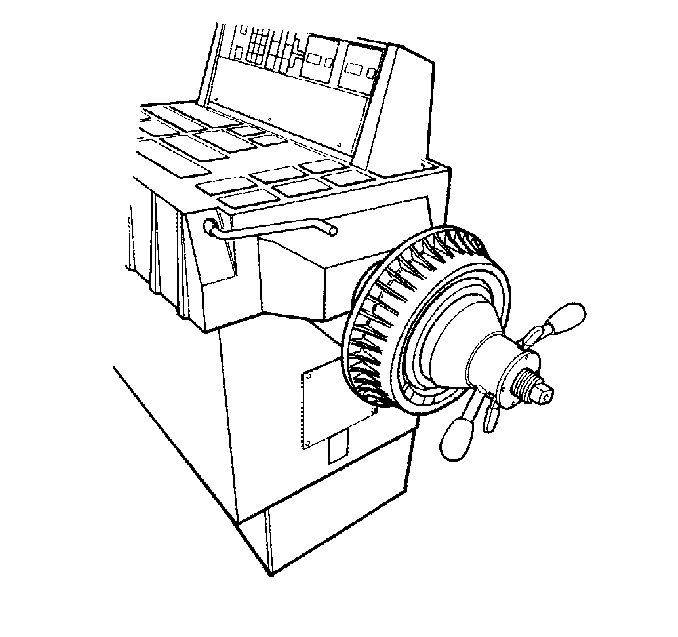For 1990-2009 cars only
- Support the vehicle drive axle on a suitable hoist. Refer to Lifting and Jacking the Vehicle .
- Remove the tire and wheel assemblies from the drive axle. Refer to Tire and Wheel Removal and Installation .
- Reinstall the wheel nuts in order to retain the brake rotors.
- Run the vehicle at the concern speed while inspecting for the presence of the vibration.
- If the vibration is still present, remove the rotors from the drive axle, then run the vehicle back to the concern speed.
- If the vibration is eliminated when the brake rotors are removed from the drive axle, repeat the test with one rotor installed at a time. Replace the rotor that is causing or contributing to the vibration concern.
- If a brake rotor was replaced as a result of following the previous steps, or if necessary to confirm the results obtained during the previous steps, and/or to check the non-drive axle components, perform the following:
Caution: Refer to Work Stall Test Caution in the Preface section.
Notice: Do not depress the brake pedal with the brake rotors and/or the brake drums removed, or with the brake calipers repositioned away from the brake rotors, or damage to the brake system may result.

| 7.1. | Mount the brake rotor/drum on a balancer in the same manner as a tire and wheel assembly. |
| Important: Check brake rotors/drums for static imbalance only; ignore the dynamic imbalance readings. |
| 7.2. | Inspect the rotor/drum for static imbalance. |
There is not a set tolerance for brake rotor/drum static imbalance. However, any brake rotor/drum measured in this same manner which is over 21 g (¾ oz) may have the potential to cause or contribute to a vibration. Rotors/drums suspected of causing or contributing to a vibration should be replaced. Any rotor/drum that is replaced should be checked for imbalance in the same manner.
